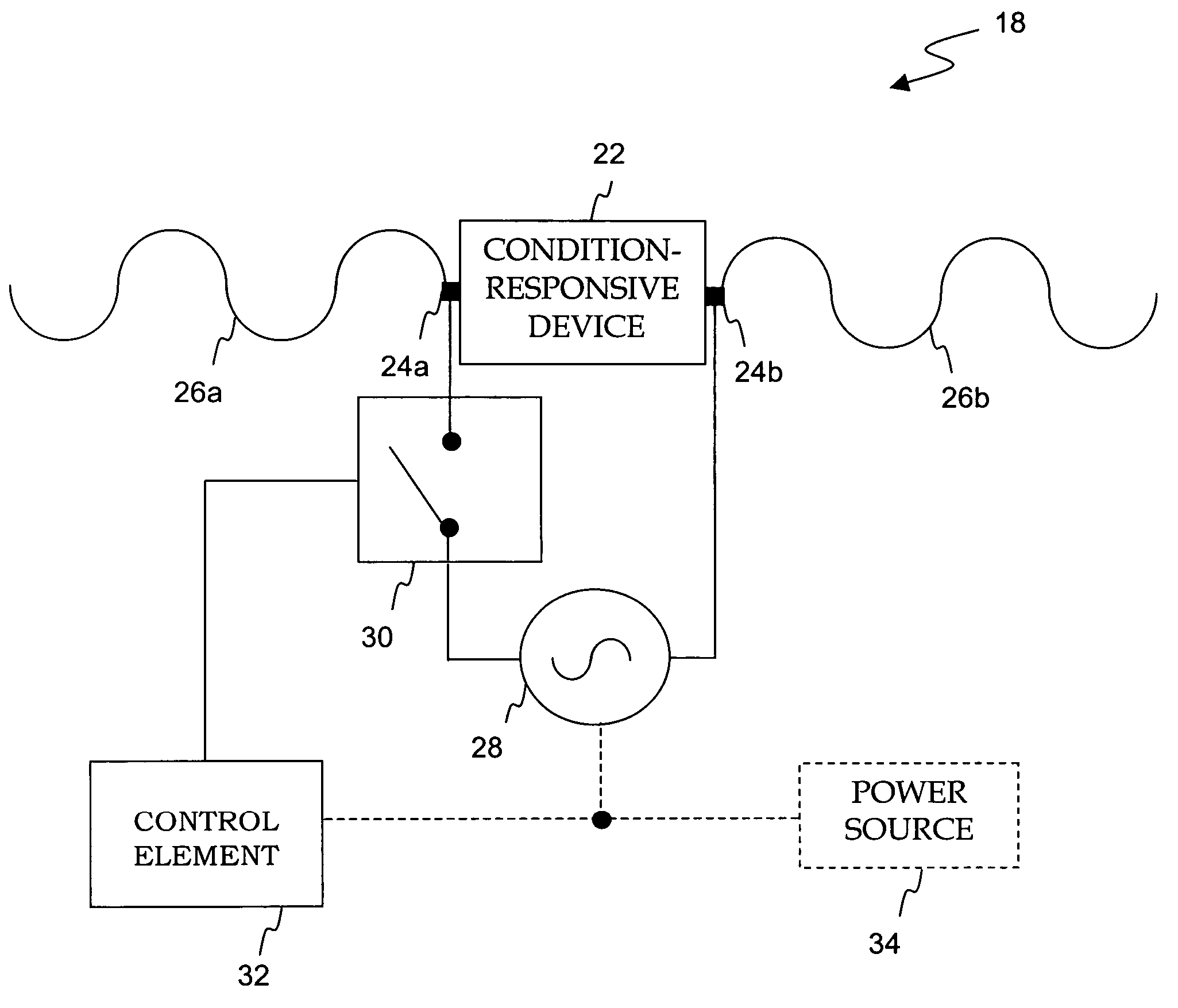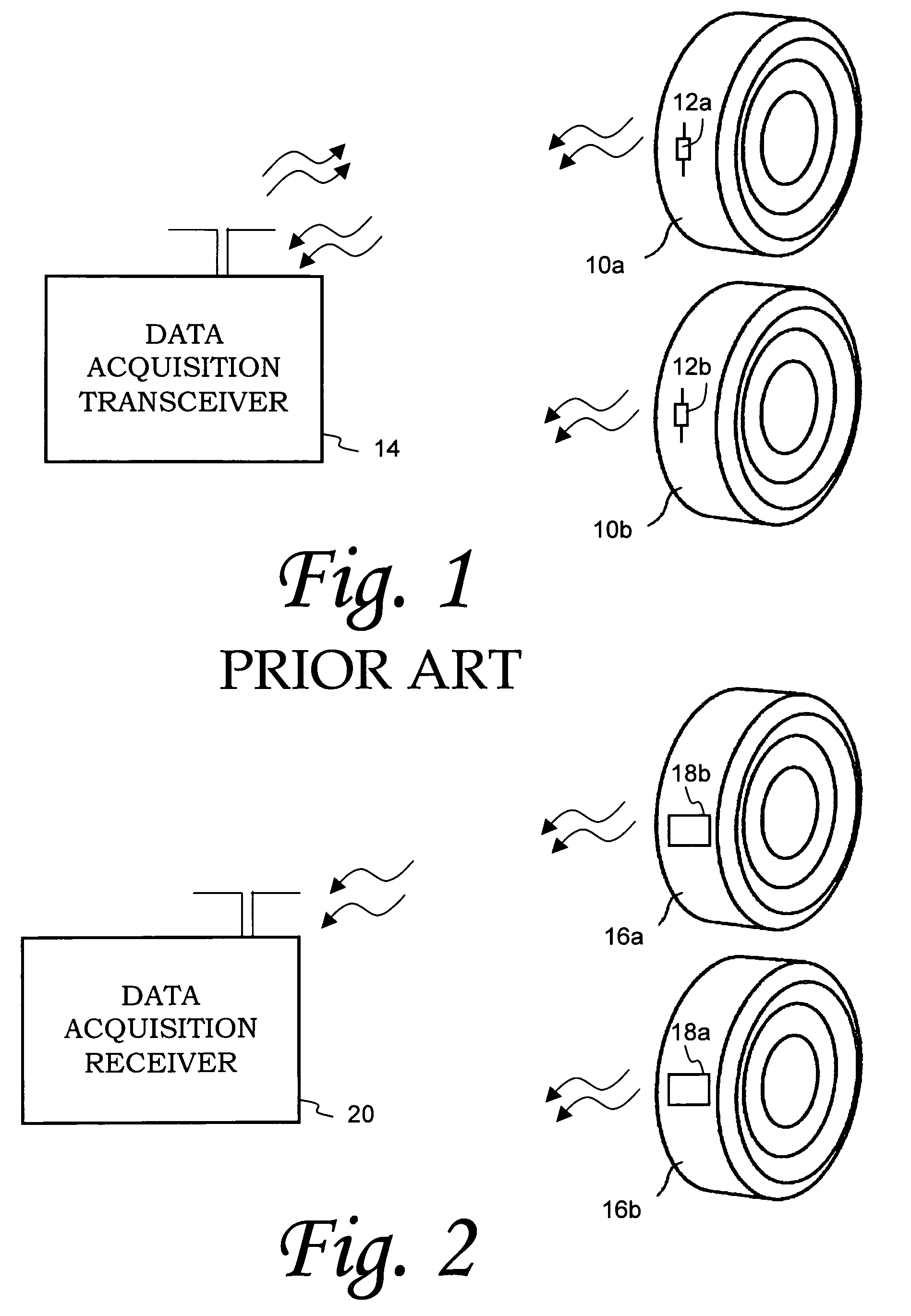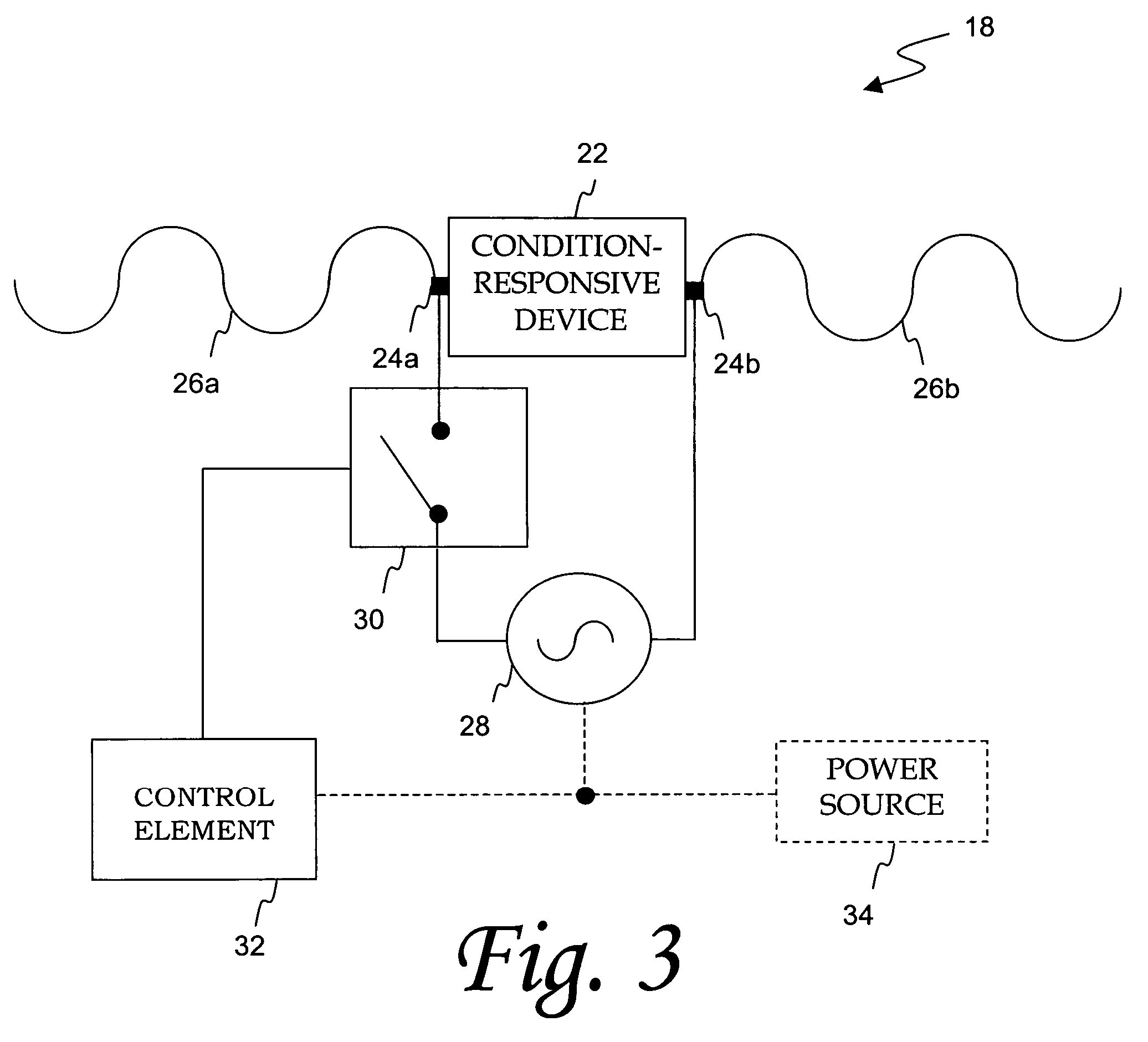Acoustic wave device with modulation functionality
a technology of acoustic wave devices and functions, applied in vehicle tyre testing, instruments, roads, etc., can solve the problems of high electromagnetic emissions, complex integrated circuitry, and passive acoustic wave devices not having their own power supply, etc., to achieve a large reduction in power requirements, increase read distance, and increase power level
- Summary
- Abstract
- Description
- Claims
- Application Information
AI Technical Summary
Benefits of technology
Problems solved by technology
Method used
Image
Examples
Embodiment Construction
[0032]As discussed in the Brief Summary of the Invention section, the present invention is particularly concerned with electronics assemblies that monitor and relay various information related to product identification and / or measurements of selected physical conditions associated with a given environment. Exemplary electronics assembly embodiments of the present invention are respectively illustrated in FIGS. 3, 4 and 5, with aspects of the operation of such assemblies illustrated with respect to FIGS. 6 and 7.
[0033]Selected combinations of aspects of the disclosed technology correspond to a plurality of different embodiments of the present invention. It should be noted that each of the exemplary embodiments presented and discussed herein should not insinuate limitations of the present subject matter. Features or steps illustrated or described as part of one embodiment may be used in combination with aspects of another embodiment to yield yet further embodiments. Additionally, cert...
PUM
 Login to View More
Login to View More Abstract
Description
Claims
Application Information
 Login to View More
Login to View More - R&D
- Intellectual Property
- Life Sciences
- Materials
- Tech Scout
- Unparalleled Data Quality
- Higher Quality Content
- 60% Fewer Hallucinations
Browse by: Latest US Patents, China's latest patents, Technical Efficacy Thesaurus, Application Domain, Technology Topic, Popular Technical Reports.
© 2025 PatSnap. All rights reserved.Legal|Privacy policy|Modern Slavery Act Transparency Statement|Sitemap|About US| Contact US: help@patsnap.com



